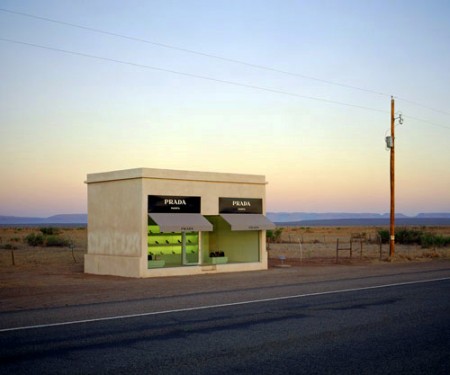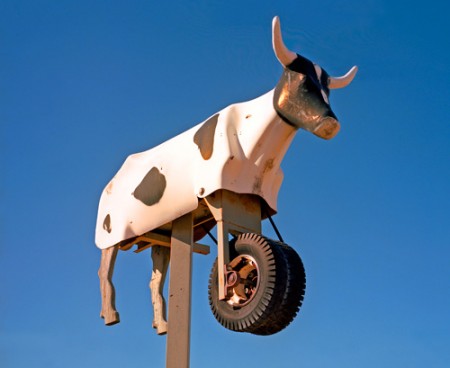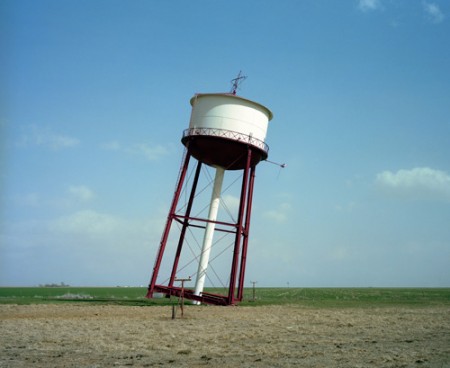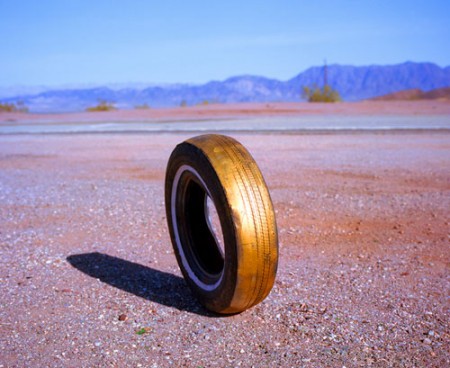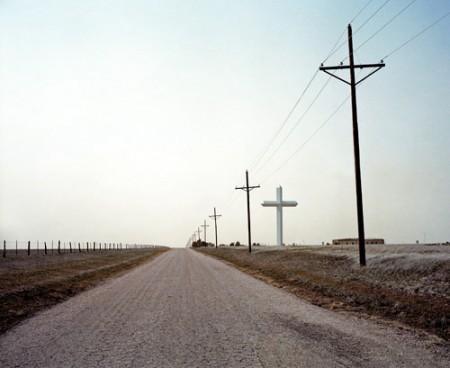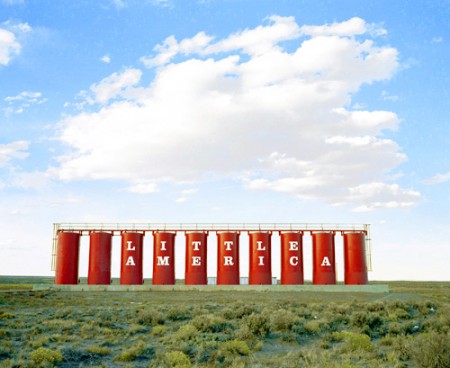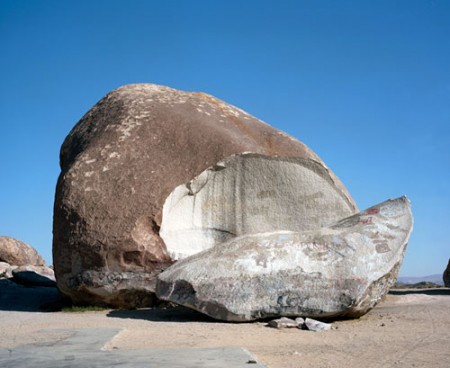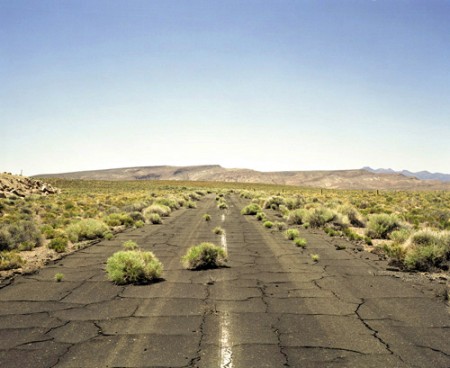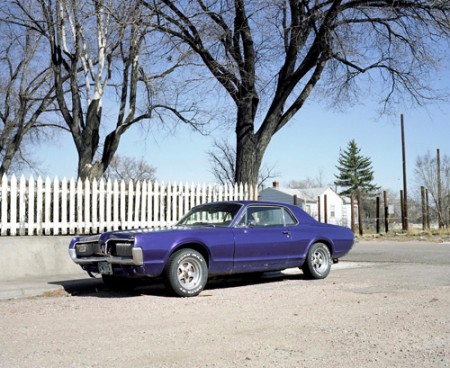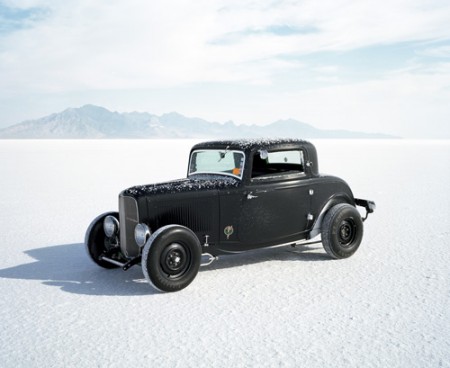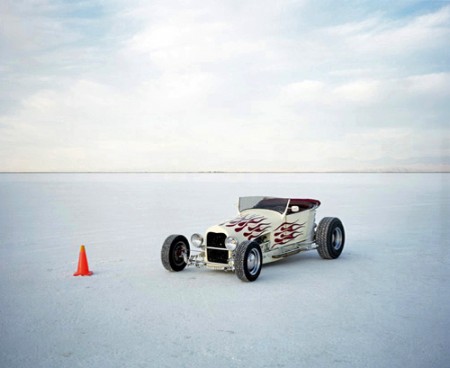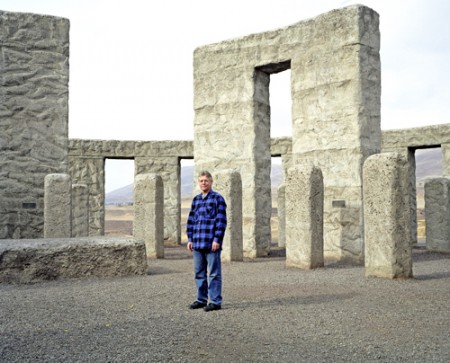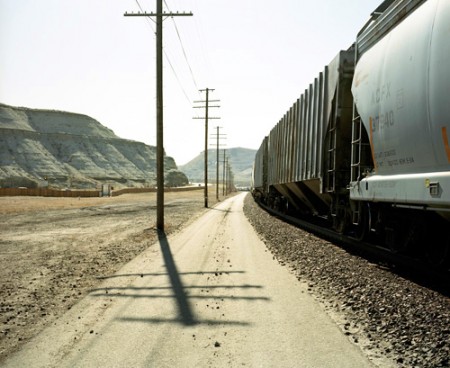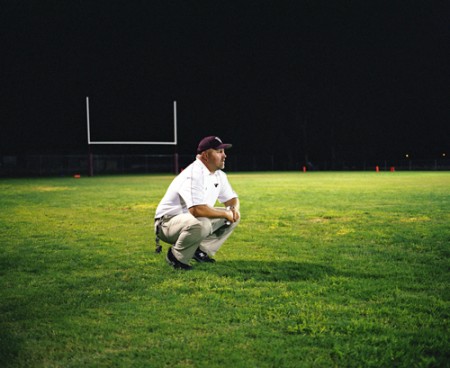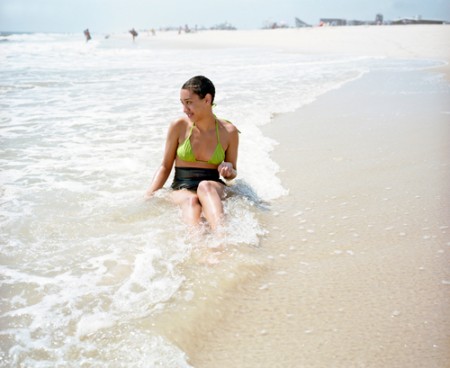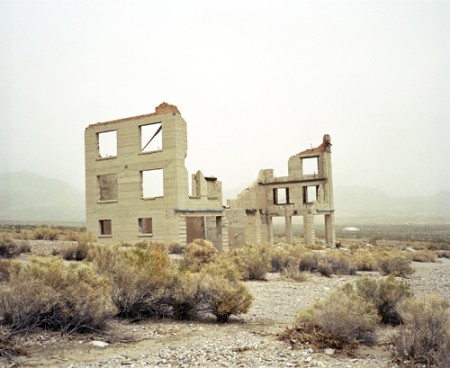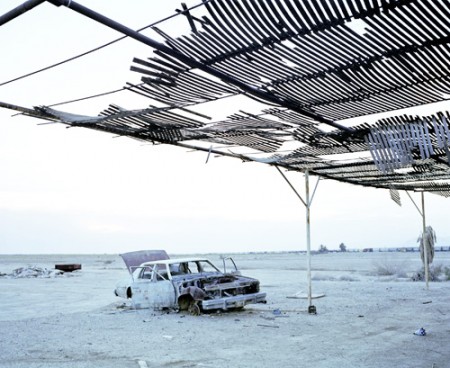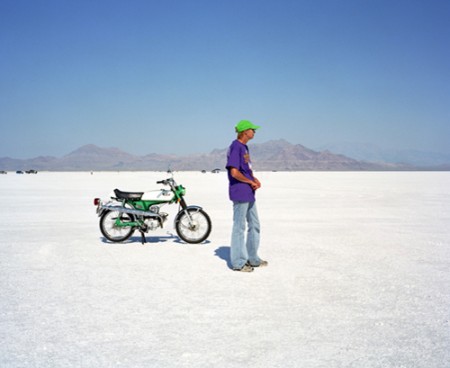18\04\2013
Written by Daan Rombaut
Deserted America: An interview with photographer Rob Hann
Rob Hann is fascinated with the desert states of America. His photos have land stretching as far as you can see, establishing a huge contrast to his hometown of Salisbury in the UK. He has always been drawn to these open spaces as they evoke a sense of wonder, silence and mystery. His photos show the serene and rugged Wild West and often inspire an out-of-this-world feeling of loneliness. BLEND\ had the opportunity to interview him, so keep reading to find out more about Rob Hann and his photos.
Interview by Daan Rombaut
BLEND\ Which photographers have influenced you?
Rob Hann\ Although it might not be apparent the first photographer that I was very influenced by was Irving Penn and then I was very into jazz photographers like William Claxton. Since turning to colour and, taking my first photographic road trip in the American West in October 2001, I came to appreciate a different group of photographers. There are many that I like but my photographic Mount Rushmore would be William Eggleston, Stephen Shore, Richard Misrach and Joel Sternfeld. My favourite among them is Eggleston.
B\ Many of your photos are taken in the United States. Since when do you feel this strong attraction to the USA?
RH\ I suppose it’s always been there to a certain extent from being exposed to American music and movies but it really took off when I read On The Road by Jack Kerouac in my 20s.
B\ And how would you explain your fascination for the desert states of America?
RH\ I grew up in England, which is small, green and crowded. I spent my childhood on a farm but for many years have lived in busy cities. The vast, dry, emptiness is such a contrast to those environments. There’s space and silence and a sense of mystery in the deserts that is very attractive and there’s a simplicity to the landscape that I like.
B\ What camera(s) do you use?
RH\ I still shoot film and I always shoot with a (medium format) Mamiya 7.
B\ What was your first camera?
RH\ It was a Nikon FM2.
B\ How did it all start for you?
RH\ My dark secret is that I used to be a model. I was living in Milan and immersed in the world of fashion and photography and I thought that maybe I could become a photographer. I saw a great Irving Penn exhibition and thought I’d like to shoot portraits. The landscape photography came later.
B\ What is the favourite photo you took yourself?
RH\ That’s a really hard question. At the moment I might say my current favourite is a picture of a dummy calf, with a wheel where its front feet should be, photographed against a deep blue sky. I shot it on the edge of Marathon, Texas. The calf is used to train cowboys for Rodeo before they start roping real animals.
B\ What’s your favourite project you shot?
RH\ I’ve been shooting my American road trips since 2001. I call the whole thing “I Dream a Highway” which is the title of a song by Gillian Welch. It’s a kind of all-engrossing thing which envelops smaller projects that I do from time to time. I did enjoy being out on Bonneville Salt Flats in Utah photographing the cars and people trying to break speed records. I also shot a 16-year old girl and her friends in and around the New Jersey town of Montclair throughout a year of their young lives. It was at a time when I couldn’t afford to go on the road to shoot. It was a very satisfying project.
B\ Which project would you like to shoot in the future?
RH\ There may be something that comes into my head but I imagine it will relate to my road trip pictures. I want to keep doing that until it’s done really well. I’d like it to be a book one day.
B\ Your photography often evokes a feeling of loneliness. Is this intended or does it happen naturally?
RH\ I don’t do it intentionally. I think it’s a part of me. I’m a very sociable person but also a bit of a loner. I think that all of our pictures are in some way a self-portrait.
B\ What does your portrait photography focus on?
RH\ I’ve been shooting fewer portraits recently. When I do shoot people I want them to look good (in my eyes). I have no interest in showing people in a negative way.
B\ What’s the most recent photo you took?
RH\ I just got back from a trip in the West taking many photos. I’m still trying to understand if the pictures are good or not, but I think I may have a good one of Robert Smithson’s Spiral Jetty on The Great Salt Lake in Utah. The pictures are not yet on my website.
B\ What’s the first photo you took and you remember?
RH\ I never had access to a camera as a child but I bought a Polaroid camera when I was 16 and I took some pictures of friends on a beach in Cornwall in England when we took a camping holiday there.
B\ How would you call your photography style?
RH\ I don’t know! I suppose it’s romantic, it’s simple, I want it to be beautiful. I like it when you have questions when you look at a photograph, when you’re not really sure what you’re looking at. I suppose I like there to be some mystery in a picture.
B\ Tell me about the last time you wished you had a camera with you, but didn’t.
RH\ Well, I do remember a moment when I had a camera in a backpack but didn’t have time to take the picture. I was in Los Angeles parking the car. It was late in the afternoon and the sun was low. A young homeless man reached into a trashcan outside an auto body shop. He pulled out a discarded can of motor oil, poured some oil into the palm of his hand, and smoothed it onto his hair. The oil dripped from his black, shiny hair and glinted in the golden sunlight. It was a really beautiful moment but I missed it. I probably wouldn’t have got a good photo of it anyway!
B\ Do you think people are born with an eye for photography or can anyone learn?
RH\ I think it helps if you have an eye for it but you can definitely learn to improve hugely. I hope I keep learning throughout my life until I can longer take a picture.
B\ You seem to be on the road a lot, what’s your favourite music to accompany you on these trips?
RH\ The music on my trips is very important to me and music greatly influences the way I think about photography. It kind of sets the scene for what I do. Here are 25 songs that have been important in that way. There are many more!
B\ Many of your photos include vintage American cars. Do you like these cars or do you think they are part of the American landscape?
RH\ They are definitely part of the American landscape and I do like them. There are very few new cars that I like. I love the cars from the 50s, 60s and 70s. Somewhere along the way, maybe as America lost its confidence, the designs, and colours, became very bland.
B\ Your photos often have vibrant colours. How important is colour to you and how do you go about getting these stark colours?
RH\ I used to only like black and white photography to look at and to shoot. I used to have to work in colour too when I was commisioned for editorial work etc. I found it difficult to take colour pictures that were more than competent. Gradually I came to love colour photography and became better at shooting it. Now I always choose to shoot in colour. I suppose I often consider colour when I choose a subject. Once I have my negatives, I scan them with a film scanner and tweak them in Photoshop until they look the way I think they look best.
More at: robhann.com

